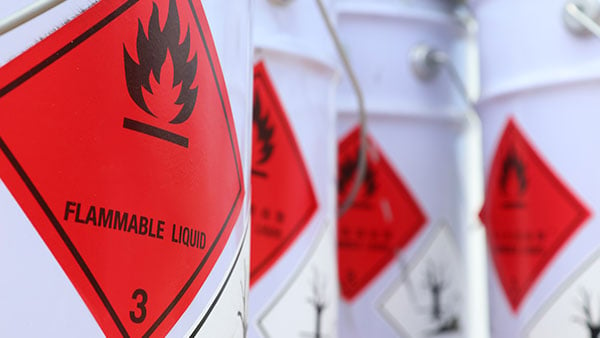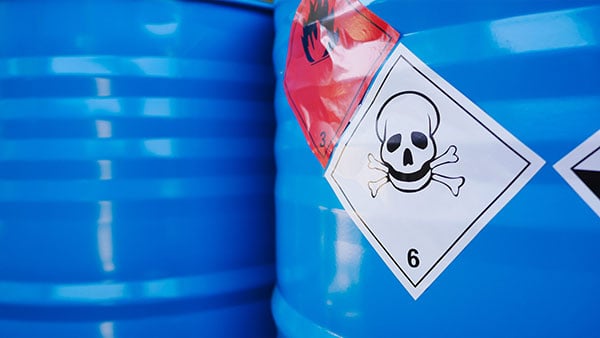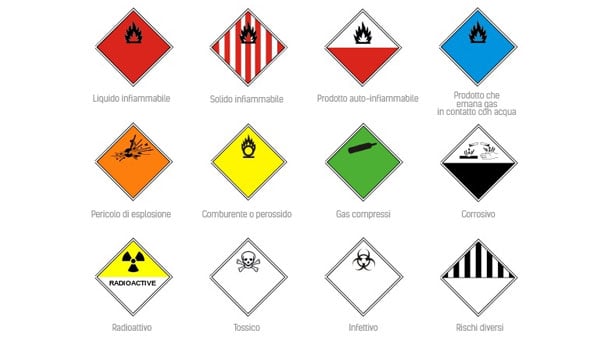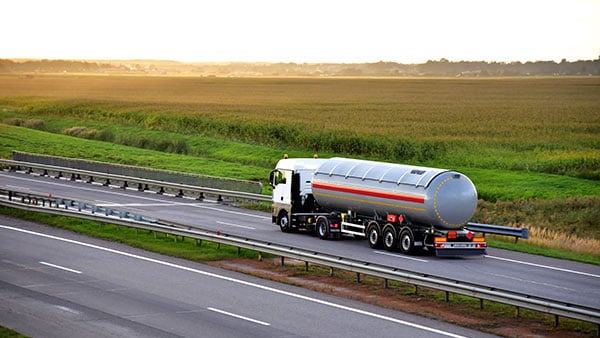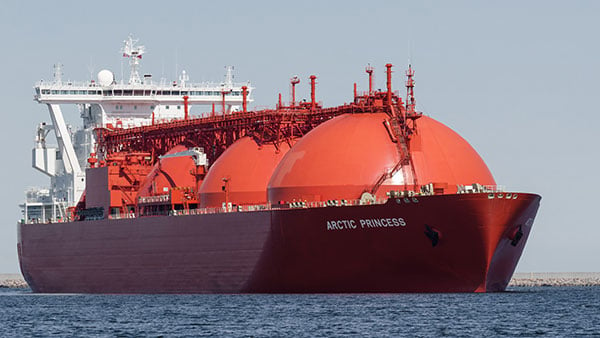The transport of dangerous goods is subject to specific international regulations that impose particular operational requirements:
- the ADR Agreement regulates the road transport of dangerous goods;
- the IMDG Code regulates the maritime transport of dangerous goods;
- the IATA DGR Code regulates the air transport of dangerous goods-discover more information;
- the RID regulates the rail transport of dangerous goods-discover more information.
All parties involved in a shipment of dangerous goods must meet mandatory requirements for the proper handling of activities including the selection of appropriate packaging, labeling, preparation of transport documents (DDT, Multimodal Dangerous Goods Form, Shipper Declaration), and control of the means of transport.
Each party involved in the transfer of dangerous goods (shipper, shipper, carrier, consignee) has its own specific duties. For example, the shipper must arrange for the classification of the goods, the choice of appropriate packaging in relation to the dangerous characteristics of the goods, and provide the carrier with the necessary documents to be able to carry out the transport safely.
The advice of the specialized logistics operator can prove very useful in order to avoid mistakes, possible inconveniences and functions.
Dangerous goods codes
Dangerous goods codes consist of 1 to 3 digits indicating the main, secondary, and possibly tertiary hazard type of the material. The code is supplemented by four more digits indicating the specific type of the material, defined as the UN number, to which the goods uniquely transported worldwide correspond.
Below is the table of primary hazards:
DIGIT
| DIGIT | AS 1ST DIGIT | AS 2ND AND 3RD DIGIT |
|---|---|---|
| 0 | Whithout specification | |
| 1 | Explosion | |
| 2 | Gas | Gas emanation |
| 3 | Flammable liquid | Flammable |
| 4 | Flammable solid | |
| 5 | Comburent | Oxidizing properties |
| 6 | Toxic | Toxicity |
| 7 | Radioactive | |
| 8 | Corrosive | Corrosivity |
| 9 | Danger of spontaneous violent reaction | Danger of violent reaction resulting from spontaneous decomposition or polymerization |
Hazard labels
Labels are the graphic representation of the hazard of the material. Multiple hazard labels may be associated with the same commodity.
Road Transport of Dangerous Goods (ADR)
The transportation of dangerous goods is subject to very stringent rules and regulations, especially with regard to the transportation of goods by road.
The term “dangerous goods” outlines a type of substance that, in the event of dispersal or mishandling, could be harmful to people and the environment itself.
In Europe, the transport of dangerous goods is regulated by the Agreement for Transport of Dangerous Goods by Road (ADR), which is the European agreement on the international transport of dangerous goods by road domestically and internationally.
Transportation of Dangerous Goods by Road, specializations and ratings are divided into four categories:
- Basic certificate: enables the transport in packages of dangerous goods of all classes (except radioactives and explosives, which can be achieved with separate endorsements);
- Tank specialization: qualifies for tank transport of dangerous goods of all classes except radioactives and explosives (which cannot be transported in tanks anyway);
- Explosives specialization: enables the transport in packages of dangerous goods of class 1 (explosives);
- Radioactive specialization: enables the transport of dangerous goods of class 7 (radioactive).
Carriage of Dangerous Goods by Sea IMDG code
For more than fifty years, the code in force internationally has been the IMDG Code, drawn up by the International Maritime Organization (IMO).
The IMDG Code-whose acronym stands for International Maritime Dangerous Goods-is the international standard that serves as a reference for the transportation of dangerous goods by sea: this is done by providing a set of rules in a uniform manner for all member countries of the organization.
At the national level, in this case in Italy, the point of reference is indicated by the Ministry of Infrastructure and Transport, which in the area of transportation of dangerous goods delegates its authority to the Port Authority.
How the IMDG Code works
The IMDG Code provides the necessary rules for the safe transport of dangerous goods at sea, such as those related to packaging, hazard criteria, transport conditions, package/unit marking, necessary documentation (such as the Multimodal Dangerous Goods Form), transport vehicles, etc.
According to the Code, which is updated every two years, dangerous goods are distinguished on the basis of different classes and subclasses according to their constituent substances. As specified above, the type of packaging, UN/UN Number, recommendations and operational practice can be found in each class.
The Dangerous Goods Classes of the IMDG Code.
Class 1: Explosives
Class 2: Gases
Class 3: Flammable liquids
Class 4: Flammable solids
Class 5: Oxidizing Substances and Organic Peroxides.
Class 6: Toxic and Infectious Materials
Class 7: Radioactive Materials
Class 8: Corrosive Substances
Class 9: Miscellaneous Hazardous Materials and Objects
Class 10: Marine Pollutants
The documentation required by the IMDG Code.
The shipper will first have to provide data about the goods, so the class, type of packaging and UN number; these data will be especially useful to the shipper in order to assess the risk and feasibility of operations.
Documents that will need to be provided next are:
- Safety Data Sheet (Product Safety Data Sheet): a legal document prepared by the company producing the goods, listing the health hazards caused by mishandling the product, the manufacturer’s details, and transport instructions;
- Multimodal for Dangerous Goods (Multimodal Sheet): a document specific to the transport of dangerous goods by sea, intended for foreign and domestic ports, in which information is given about the product and the manufacturer, the type of transport, the means used, and the route taken.
The final decision on the transport of dangerous goods rests with the shipping company; therefore, it will be necessary to rely on experts in the field who can carefully assess the type, dangerousness and

